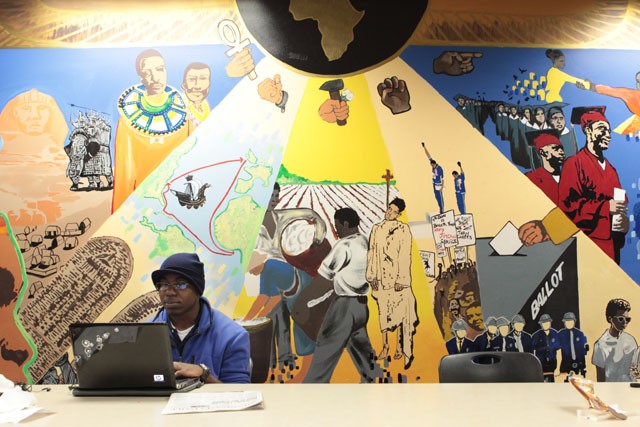When Hassan Shahid leaves the Black Student Union for the last time before studying in Morocco this February, he will be sure to take a hard look at the place he has called his âÄúhome away from homeâÄù for nearly three years.
âÄúI was thinking about putting in my application for the BSU board for next year before I leave,âÄù Shahid, a current board member, said. âÄúBut I donâÄôt think I will âÄì because I donâÄôt want to come back and have it be gone. âÄú
Shahid is not alone. Many student groups fear losing their space on the second floor of Coffman Union after the University proposed turning the space into a resource center for all student organizations.
Last spring, after the Board of Governors received several complaints from student groups who didnâÄôt have space in Coffman, the board visited other Big Ten schools and found resource centers within their student unions âÄúworked really well,âÄù according to Haley Mruz, a policy committee member on the Board of Governors. She said the space redesign was based on a comparison with what other schools are doing.
But it was not well-received at campus forum discussions in October.
Many students have since voiced concerns about what it could mean for the cultural and diversity groups currently housed on the second floor if their space was taken away.
âÄúThe second floor shouldnâÄôt change,âÄù said Carolina Miralles, a La Raza board member. âÄúHaving cultural centers here in Coffman dissolves ignorance. You donâÄôt have to travel abroad to learn something new, and for us as minority groups, it provides a familiar face and a chance to see others who share something with you succeed.âÄù
Shahid insists the second floor community plays a vital role in campus life.
âÄúThis is the first place admissions come on tours to show how diverse and welcoming campus is,âÄù Shahid said. âÄúI donâÄôt understand how they come to the second floor and use us as an advertisement for diversity and then threaten to get rid of our home here on campus.âÄù
Assad Amini, a board member of the Minnesota International Student Association, agrees. He said taking away student groupsâÄô space on the second floor would deprive Coffman of a space where students can share common interests, understandings and backgrounds.
An ad-hoc committee was formed in November to reach a solution to some of the issues raised by students.
There have also been complaints from groups that do not have space in Coffman. The ad-hoc committee includes representatives of groups who hold space and those who donâÄôt.
To accommodate groups without space, the American Indian Student Cultural Center has an assistant who schedules time for them to borrow the space, cultural center president Larissa Littlewolf said.
âÄúWe always have allowed other groupsâÄô meetings in here,âÄù she said.
According to Littlewolf, giving the space up completely would be difficult because her groupâÄôs space reflects its particular needs and traditions. She said it has been designed with a unique ventilation system to burn sage and a sound-proof office for drumming and ceremonies.
Without allowing this special relationship that different cultural groups have formed with their rooms, the University would be implying that âÄúall racial and ethnic groups are the same,âÄù Littlewolf said.
Additionally, if the space for these cultural groups is taken away, their membership numbers will drop significantly, said Cortez Riley, an ad-hoc committee member and former BSU president.
According to Mruz, the Board of Governors understands the concerns of these student groups. The best way to reach a solution is to make sure âÄúeverybody approves of what is decided,âÄù she said, adding that she hoped to reach an agreement by April.
The ad-hoc committee meetings are intended to generate new ideas and constructive feedback from members, and to reach a compromise, Joel Livingood, president of the Board, said.
At the next committee meeting on Jan. 25, members will discuss how the proposed resource center could function, and fair space allocation.
Despite heated debate surrounding the issue, one La Raza member insists recent discussions have sparked some positive growth on the second floor of Coffman.
âÄúThis issue has been such a huge deal that it has really brought us together as a second floor community,âÄù Karla Rivera, an elementary education major, said. âÄúWe have had so many collaborations with people from diverse organizations about the issue. It has really been the bridge that has connected multicultural groups here.âÄù


